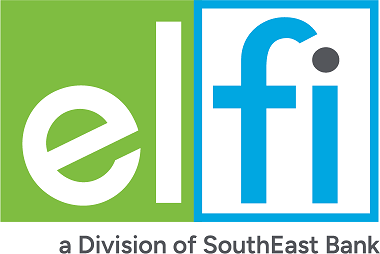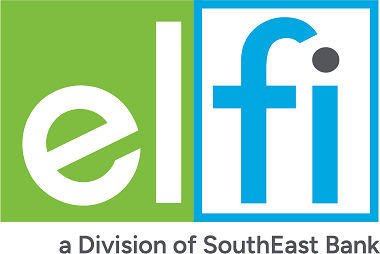Summary: The Parent PLUS Loan is a federal loan that parents of dependent undergraduate students can use to help pay for their child’s education. The Direct Parent PLUS Loan offers a fixed 9.08% interest rate for the 2024 - 2025 school year and flexible loan limits. To be eligible, a parent can’t have an adverse credit history. The credit check for this loan is less strict than for private student loans, so even if you’re denied a private loan, you could still be approved for a Parent PLUS Loan. Parent PLUS Loans have a 4.228% origination fee for loans first disbursed on or after Oct. 1, 2024 through Sept. 30, 2025.
Before parents explore borrowing through the Parent PLUS Loan program, it’s recommended that their child first takes full advantage of their eligibility for Direct Loans. This is because Direct Loans typically come with lower interest rates and fees.
While many parents choose Parent PLUS Loans to prevent their children from being burdened by substantial student loan debt, it's crucial to remember that parents can offer support with loan repayments after graduation. Opting for Direct Loans over Parent PLUS Loans as a primary option can be a financially prudent approach, potentially resulting in notable savings for the family in the long run.
Parent PLUS Loan Interest Rates
Interest rates on PLUS Loans are fixed. The current interest rates for new PLUS Loans in 2024 - 2025 are 9.08% for parents of undergraduate students (Parent PLUS Loans) and for graduate students (Grad PLUS Loans).
Private Student Loan Rates
Variable rates starting at:
4.36% APR
Fixed rates starting at:
2.71% APR
Lowest APRs shown for Private Student Loans are available for the most creditworthy applicants for undergraduate loans, and include a 0.25% interest rate reduction while enrolled in automatic payments. Interest rates as of March 4, 2024.
Federal Student Loan Rates
For loans first disbursed July 1, 2024 through June 30, 2025
6.53%
Undergraduate
8.08%
Graduate
9.08%
PLUS Loans
Instantly Compare Private Student Loan Lenders
Parent PLUS Loan Fees
Loan disbursement and default fees are effectively a form of up-front interest. Assuming a 10-year repayment term, a 4% fee is the equivalent of an increase in the interest rate of about seven-eighths to one percentage point. Assuming a 30-year repayment term, a 4% fee is the equivalent of an increase in the interest rate of about one-third to half a percentage point.
The relative impact of a fee is greater with a shorter repayment term or if the borrower prepays the loan, since the fee will be amortized over less time. This is why borrowers who plan to pay off a loan early may wish to avoid up-front fees, if possible.
How to Apply for a Parent PLUS Loan
The first step in the application process is for the student to file the Free Application for Federal Student Aid (FAFSA®) at StudentAid.gov. The FAFSA is a requirement to borrow from the Parent PLUS Loan program.
Parent PLUS Loan Application
You, as the parent, will not need to complete the Direct PLUS loan application. You will need to log into Student.Aid.gov with your FSA ID.

Complete the Direct PLUS loan application. You will need to identify how much you would like to borrow, and authorize a credit check. The U.S. Department of Education will then conduct a credit check to determine if you have adverse credit. If you are determined to have adverse credit, you can then:
- file an extenuating circumstances appeal, or
- apply with a cosigner.
Guidelines for requesting a Parent PLUS Loan:
- Same parent who will complete and sign the Master Promissory Note (MPN) should request the loan.
- Parent, not the student, must request the loan.
- A parent must sign into the StudentAid.gov with their FSA ID. If you don't already have one, you will need to create your own FSA ID.
Parent PLUS Loan Eligibility
Parent PLUS Loans are available only to the parents of dependent undergraduate students. The parents of independent undergraduate students are not eligible for the Parent PLUS Loan.
If a dependent student’s parents are divorced, both parents can take out separate Parent PLUS Loans with separate Master Promissory Notes (MPNs). But the combined Parent PLUS Loans cannot exceed your student’s cost of attendance minus other financial aid received.
Who Can Borrow From the Parent PLUS Loan Program
| Type of parent or guardian | |
|---|---|
| Eligible Or Not Yes or No | |
| Biological or Adoptive Parent | Yes |
| Stepparent | Yes, but only for as long as the stepparent is married to the student’s parent |
| Grandparents, Aunts, Uncles, Other Relatives | No, unless they have legally adopted the student |
| Legal Guardians or Foster Parents | No |
Eligibility for the Parent PLUS Loan does not depend on demonstrated financial need.
Parent PLUS Credit
Eligibility for a Parent PLUS Loan does not depend on the borrower’s credit score or debt-to-income ratio. However, the borrower of a Parent PLUS Loan must not have an adverse credit history, as defined by the U.S. Department of Education.
What is Adverse Credit History?
- A current delinquency of 90 or more days on more than $2,085 in total debt; or
- More than $2,085 in total debt in collections or charged off in the past two years (before the date of the credit report); or
- Default, bankruptcy discharge, foreclosure, repossession, tax lien, wage garnishment, or write-off of federal student loan debt in the past five years (before the date of the credit report)
Denied a Parent PLUS Loan
If you have adverse credit history, there are still options available to borrow from the Parent PLUS Loan program. You have two choices: either submit a successful extenuating circumstances appeal for an exceptional situation, or reapply with a cosigner without an adverse credit history.
To appeal the decision, submit a request and provide information about your denial. If successful, completing loan counseling may be required before receiving the Parent PLUS loan funds.
Alternatively, if you apply with a cosigner who doesn't have adverse credit, they need to complete an endorser application.
If neither of these options works, your denial for a Parent PLUS Loan makes your dependent undergraduate student eligible for independent undergraduate student Stafford loan limits. This means they can borrow additional funds under their name to help cover their college costs.
Increased Loan Limits with a PLUS Denial
If a dependent student’s parent is denied a Parent PLUS Loan, the student becomes eligible for the same Direct Unsubsidized Loan limits available to independent students.
If either parent later qualifies for a Parent PLUS Loan, the student’s loan limits return to the dependent student level. (Loan amounts already received under the additional Direct Unsubsidized Loan limits will not count against the lower loan limits.)
Other Requirements for a Parent PLUS Loan
The parent and dependent student must also satisfy the general eligibility requirements for federal student aid and federal student loans.
- Students must be enrolled in school on at least a half-time basis
- Male students must have registered with the Selective Service (not required for father)
- Students and parents must be U.S. citizens or nationals, permanent residents, or eligible noncitizens
- Students and parents can’t be in default on a federal student loan
- Parent PLUS Loan proceeds must be used for educational purposes
Parent PLUS Loan Interest Rate
The interest rates on Parent PLUS Loans are fixed and do not change over the life of the loan. The interest rate for the 2024 - 2025 academic year is 9.08%.
Every year on July 1, interest rates are reset based on current market rates.
The interest on a Parent PLUS Loan starts to add up (accrue) from the date the loan is first disbursed. (Generally, federal student loans are sent to schools in two or more disbursements, except at colleges and universities that have a low default rate.) If the borrower does not pay the interest as it accrues, it will be capitalized (added to the loan balance), increasing the size of the loan.
Parent PLUS Loan Origination Fee
The current origination fee on Parent PLUS Loans is 4.228%. Fees are deducted from each loan disbursement. Borrowers can ask the college financial aid office to increase the amount borrowed to cover the fees.
Parents should compare the costs and benefits of PLUS Loans and private student loans. Parents with excellent credit may qualify for private student loan interest rates that are lower than the current PLUS Loan rate.
Parent PLUS Loan Limits: How Much Can You Borrow
The annual loan limit on a Parent PLUS Loan is the full annual cost of attendance minus other financial aid received by the student. There is no aggregate (cumulative) loan limit.
The cost of attendance includes:
- Tuition and fees
- Room and board
- Books
- Supplies
- Equipment
- Transportation
- Miscellaneous personal expenses
Parent PLUS Loan Refund Check
If the Parent PLUS Loan creates a credit balance on the student’s account, parents have the option to accept the refund or have the refund issued to the student. You can specify the recipient of leftover funds during the application process, or contact the school to update this information.
Parent PLUS Loan Deferment
Repayment on a Parent PLUS Loan normally begins no later than 60 days after the loan is fully disbursed. However, borrowers can defer repayment of a Parent PLUS Loan while the student is in school and during a six-month grace period after the student graduates or drops below half-time enrollment status. Parent PLUS Loans can also be deferred while the parent borrower is enrolled on at least a half-time basis in an eligible program. However, interest continues to accrue during these deferment periods.
Parent PLUS Loan Grace Period
Parent PLUS loans don’t technically have a grace period because they enter repayment within 6- days after the loan is fully disbursed. However, the in-school deferment option (explained above) can be used to postpone payments.
Recommendations
- File the FAFSA every year to maintain eligibility for student aid.
- Dependent students should take out Direct Subsidized Loans (if eligible), and Direct Unsubsidized Loans before parents consider taking out a PLUS Loan.
- Compare the costs and benefits of Parent PLUS Loans vs. private student loans. Parents with excellent credit may qualify for private student loan interest rates that are lower than the current PLUS Loan rate.
- If a parent is denied for a PLUS Loan due to an adverse credit history, the student should contact the school’s financial aid office to request a higher limit on the Direct Unsubsidized Loan.
Learn More About Paying for College
Best Private Student Loans for April 2025
Private Student Loans vs PLUS Loans
How to Pay for College Without Financial Aid






















